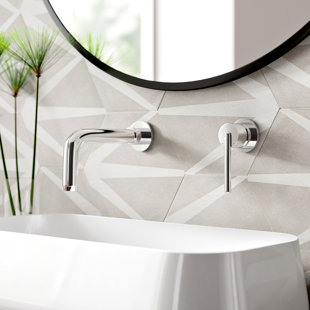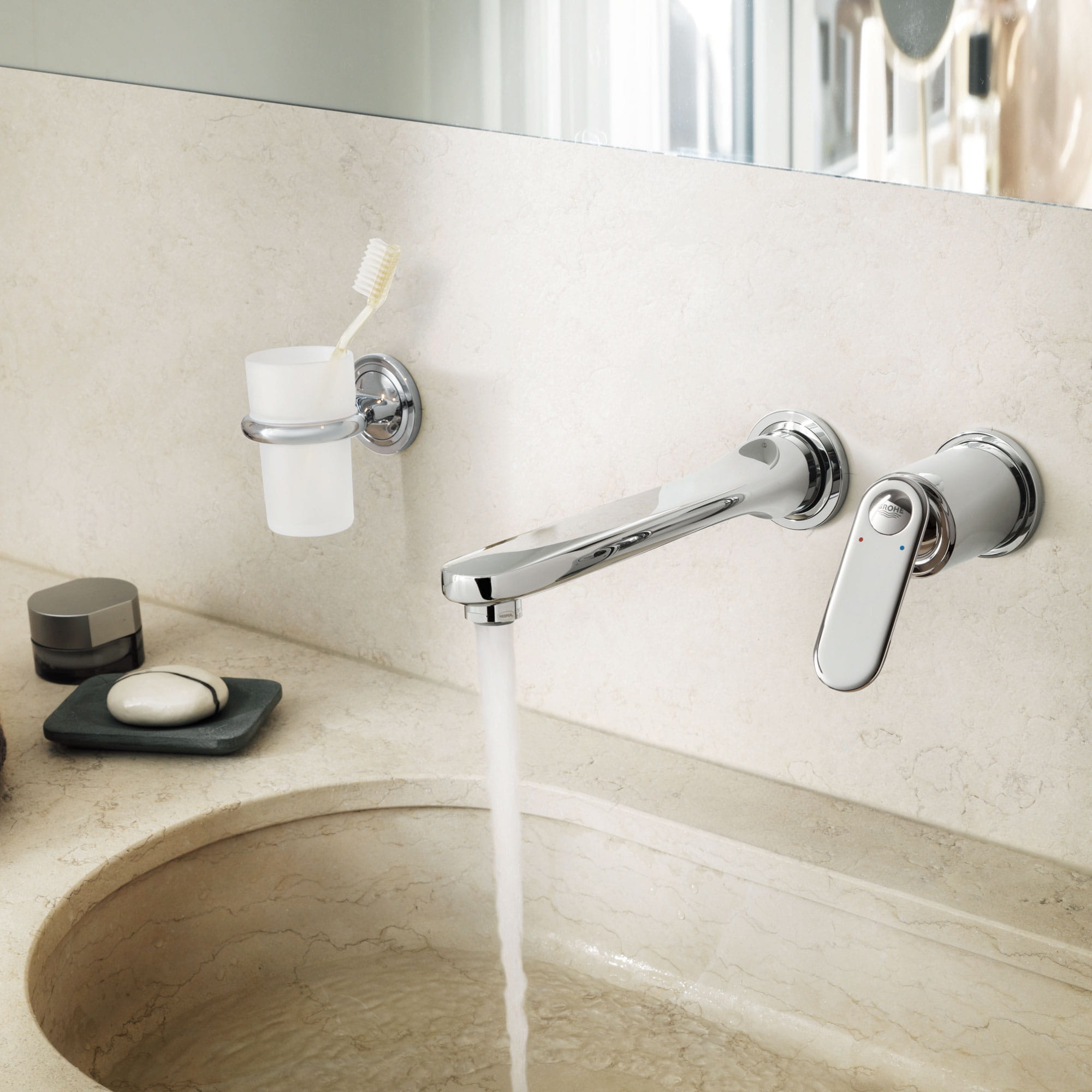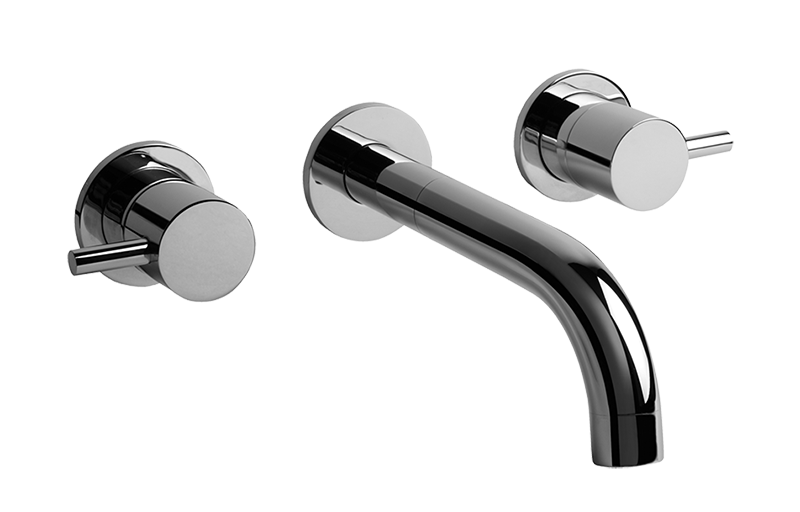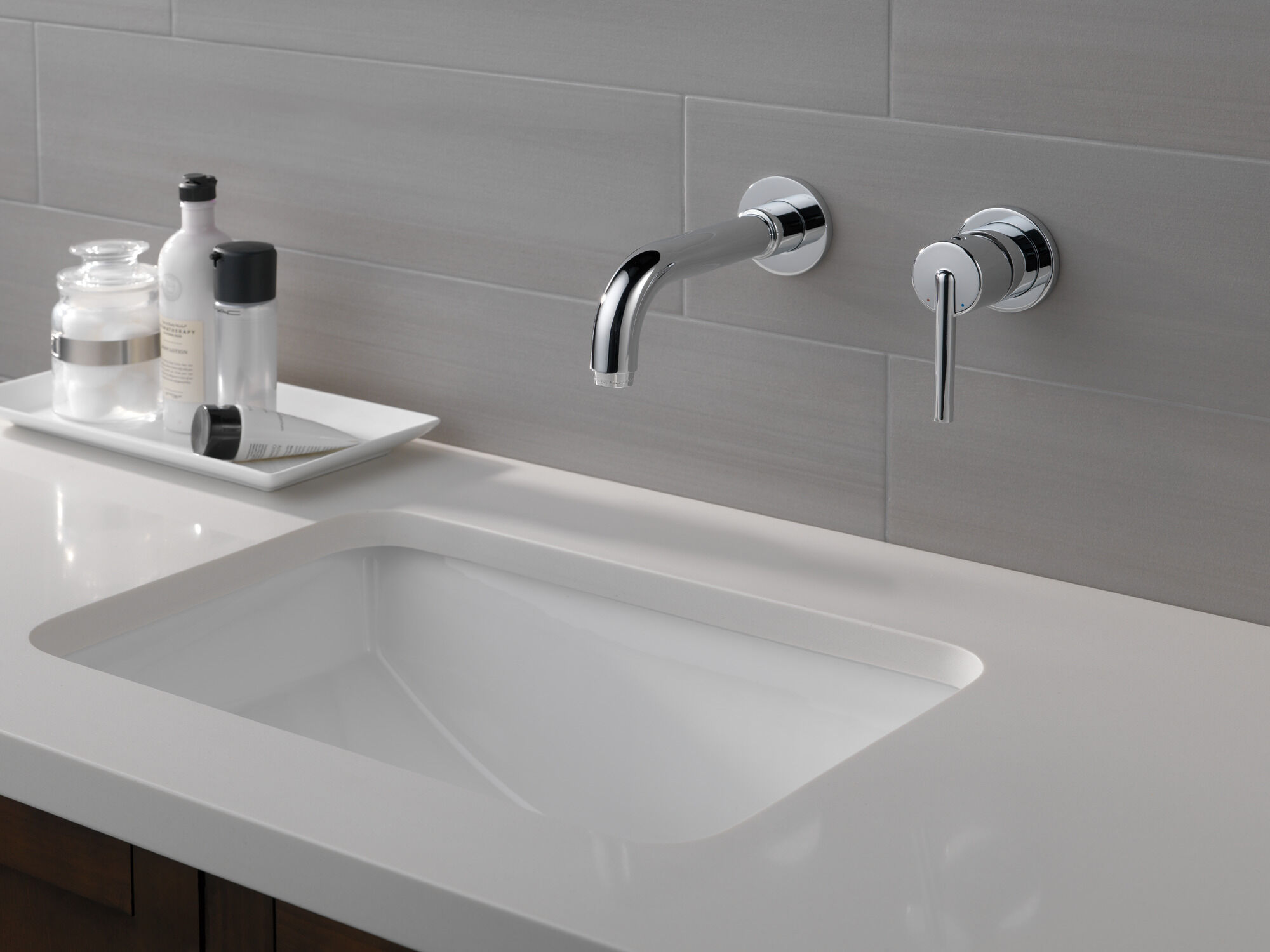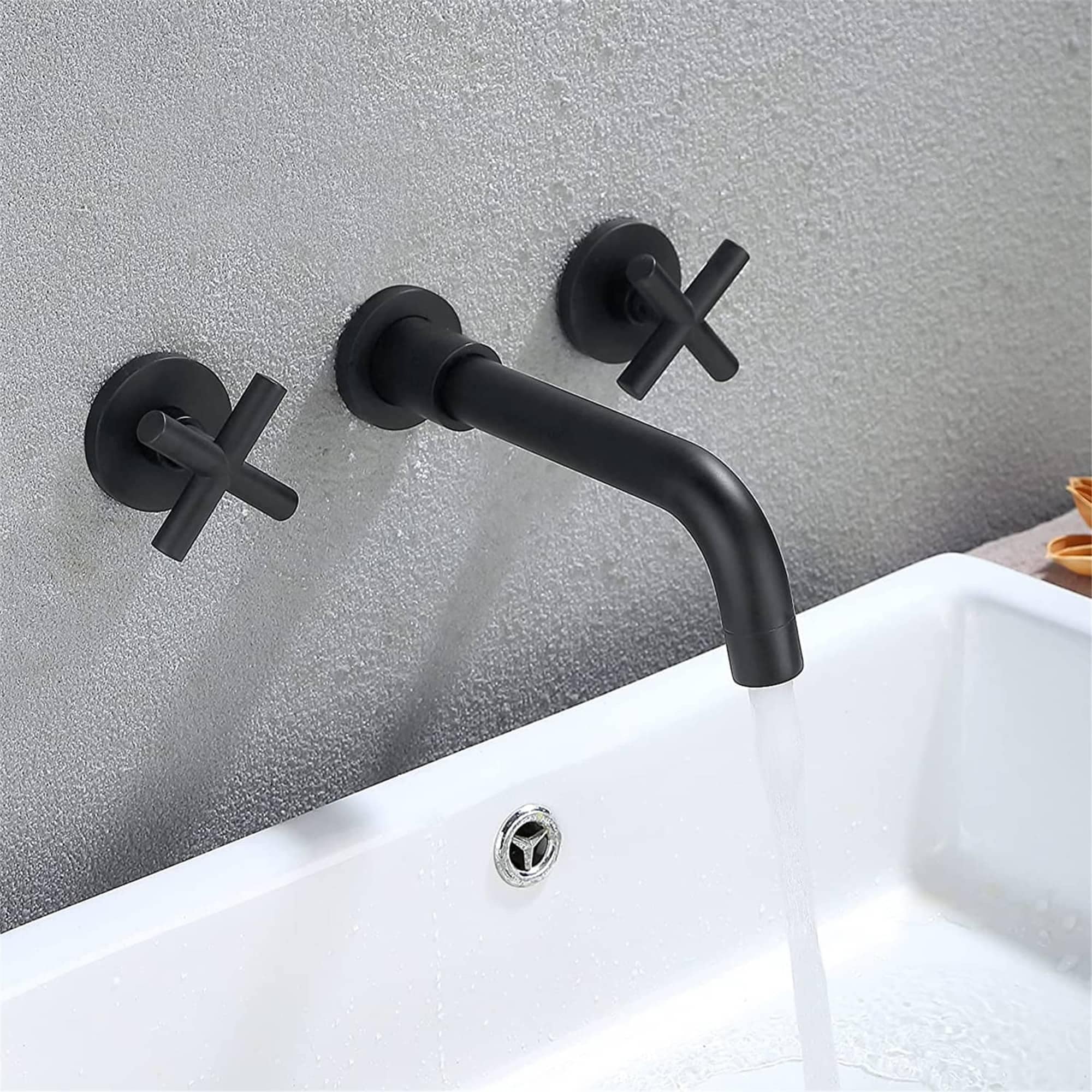Why Choose Wall-Mounted Faucets for a Modern Bathroom?
When I first considered updating my bathroom, the idea of wall-mounted faucets immediately caught my attention. There’s something sleek and stylish about them that complements a modern bathroom design perfectly. If you’re thinking about remodeling or simply upgrading your fixtures, wall-mounted faucets are worth considering. Here’s why I think they’re a fantastic choice.
- Space-Saving Solution One of the biggest advantages of wall-mounted faucets is the amount of space they save. Since they’re mounted on the wall, the countertop is free of bulky faucet hardware, making the space feel less cluttered. In smaller bathrooms, every inch counts, and I found that switching to a wall-mounted faucet instantly made my sink area feel more spacious and open.
- Elegant and Minimalistic Look If you’re aiming for a clean, minimal aesthetic, wall-mounted faucets are a perfect match. They have an elegant simplicity that I love, especially in modern or contemporary bathrooms. Without a traditional faucet sitting on the countertop, the design lines are smooth and uninterrupted, giving the bathroom a more streamlined appearance.
- Easier Cleaning and Maintenance One of the unexpected benefits I discovered after installing a wall-mounted faucet was how easy it is to keep the sink and countertop clean. Traditional faucets can trap grime around the base, but with wall-mounted faucets, there’s no hardware sitting directly on the counter. It’s much easier to wipe down the surface, making maintenance less of a chore.
- Customization Options Wall-mounted faucets come in various designs, making it easy to find something that fits your bathroom’s style. I love that I could choose the height and positioning to match my sink perfectly. The flexibility allowed me to create a personalized look, and I found it much easier to adjust the design compared to traditional countertop faucets.
- Unique and Stylish Let’s face it—wall-mounted faucets aren’t as common as their countertop counterparts, which means they add a unique flair to your bathroom. Whenever someone visits, they always comment on how sleek my faucet looks, and I love that it adds a modern twist that’s still relatively uncommon.
- Perfect for Vessel Sinks If you have or are considering a vessel sink, wall-mounted faucets are practically a must. Since vessel sinks sit on top of the counter, a wall-mounted faucet is perfectly positioned to direct the water into the bowl without splashing. I paired mine with a vessel sink, and it was a match made in design heaven.

Key Features to Look for in Modern Wall-Mounted Faucets
As someone who recently went through the process of selecting a wall-mounted faucet, I quickly realized there are several key features to consider. It’s not just about picking a pretty design—functionality and practicality are just as important. Here are the essential features to look out for when choosing a modern wall-mounted bathroom faucet.
Durability of Materials When I was browsing faucets, the material was one of the first things I considered. A faucet gets used multiple times a day, so it’s important to choose one that’s made from high-quality, durable materials like stainless steel, brass, or chrome. I opted for a brass faucet with a durable finish because it resists corrosion and maintains its shine over time.
Water Flow Control One feature I didn’t realize was so important until after installation was the faucet’s water flow control. Modern faucets often come with aerators that mix air into the water stream, reducing water usage without sacrificing water pressure. My faucet came with this feature, and it’s not only eco-friendly but also helps reduce water splashing.
Spout Length and Reach When choosing a wall-mounted faucet, the spout length is critical. It needs to reach far enough into the sink to direct water properly but not so far that it overshoots the basin. I made sure to measure the distance between the wall and my sink to ensure the faucet would work seamlessly without creating a mess.
Installation Requirements I found out that wall-mounted faucets require a bit more thought when it comes to installation. The plumbing needs to be inside the wall, so it’s essential to work with a contractor or plumber if you’re not familiar with the setup. Before purchasing my faucet, I made sure it was compatible with my existing plumbing and that the installation wouldn’t be too complicated.
Temperature Control Options One feature that makes a big difference in convenience is the faucet’s temperature control. Some modern wall-mounted faucets come with single-handle designs, while others have two separate handles for hot and cold water. I opted for a single-handle faucet because it’s easier to adjust, but both styles have their advantages depending on personal preference.
Style and Finish Of course, style is a big factor when choosing any bathroom fixture. Modern wall-mounted faucets come in a variety of designs and finishes, from matte black to polished nickel. I chose a matte black finish because it complemented my bathroom’s modern aesthetic, but there are plenty of options to suit any taste.
Popular Materials and Finishes for Contemporary Faucets
The materials and finishes of your wall-mounted bathroom faucet can dramatically change the look and feel of the space. I spent a lot of time choosing the right finish for my bathroom, and it paid off. Whether you want a sleek, industrial vibe or something more classic, here’s a guide to the most popular materials and finishes.
Brass for Timeless Appeal Brass faucets are a classic choice and remain popular in modern bathrooms because of their durability and timeless appeal. I chose a brushed brass finish for my faucet, and it adds a warm, sophisticated tone to the room. Brass is naturally resistant to corrosion, making it a practical choice for wet environments like bathrooms.
Chrome for a Sleek, Polished Look Chrome is another popular material, especially for modern bathrooms. It has a sleek, polished look that fits well with contemporary designs. One of the main reasons I considered chrome was because of its high-shine finish that reflects light beautifully. Plus, chrome faucets are easy to clean and maintain, making them a low-maintenance option.
Matte Black for a Bold, Modern Statement Matte black has become a trendy finish for modern bathroom faucets, and it’s easy to see why. It makes a bold, dramatic statement that I absolutely love. The matte texture hides water spots and fingerprints, which is a huge plus for a busy bathroom. It’s a sleek and understated option if you want a modern look with minimal upkeep.
Stainless Steel for Industrial Style Stainless steel is another material I seriously considered for its industrial look and durability. It’s resistant to rust and stains, which makes it a perfect choice for a bathroom. The brushed finish adds a sleek, professional feel to the space. I’ve seen it used in minimalist and industrial-style bathrooms, and it looks fantastic.
Nickel for Subtle Elegance If you’re after something more subtle, nickel is a great choice. Polished nickel has a reflective, shiny surface similar to chrome but with a slightly warmer tone. I considered using brushed nickel because it’s softer and less shiny, making it ideal for a more relaxed, understated bathroom vibe.
Bronze for a Vintage, Classic Look Although it’s not as common in modern designs, bronze faucets can add a vintage touch to the bathroom. If you’re mixing modern and traditional elements, an oil-rubbed bronze faucet can create a unique contrast. I’ve seen them in bathrooms with rustic or farmhouse styles, and the dark, rich finish adds a lot of character to the space.
Designing Around Wall Mounted Faucets: Tips for Layout and Installation
One thing I quickly learned when I decided to go with a wall-mounted faucet is that it requires careful planning, both in terms of layout and installation. It’s not just about picking a faucet and screwing it into the wall—there are several factors to keep in mind to make sure everything works smoothly. Here’s what I found most helpful when designing around my wall-mounted faucet.
Consider the Sink and Faucet Pairing One of the first things to consider when planning for a wall-mounted faucet is the sink. The faucet needs to be positioned so that the water flows into the sink without splashing out. I measured my sink’s width and depth and chose a faucet with a spout that was long enough to reach the center of the basin. If you’re using a vessel sink, make sure the faucet height and spout length are compatible.
Plumbing Placement is Crucial Since the faucet is mounted on the wall, you’ll need to make sure the plumbing is in the right place. I had to work with a plumber to ensure the pipes were properly aligned behind the wall. This is especially important if you’re remodeling, as you may need to move or extend your existing plumbing to accommodate the new faucet placement.
Height of the Faucet Installation I spent a lot of time figuring out the right height for my faucet installation. Too high, and the water might splash; too low, and it could be awkward to use. As a general rule, I found that installing the faucet 6 to 10 inches above the sink rim works best. However, the exact height can vary depending on your sink’s depth and the faucet’s design.
Plan for Enough Clearance Another thing I didn’t initially think about was the clearance between the faucet and other bathroom elements. Make sure there’s enough room for the faucet handles to operate smoothly without hitting the wall or mirror. I double-checked this during the design phase to ensure I wouldn’t run into any issues later on.
Coordinate with Bathroom Fixtures Wall-mounted faucets are a focal point, so I wanted to make sure the design complemented the rest of my bathroom fixtures. I chose a matte black faucet to match my showerhead and towel bars. Keeping the finishes consistent across the room created a cohesive and polished look, which I highly recommend doing.
Work with a Professional for Installation While some home improvement projects are great for DIY, I found that installing a wall-mounted faucet requires the expertise of a professional. Not only is the plumbing more complicated, but ensuring the faucet is mounted correctly and at the right angle is essential for long-term durability. I didn’t want to risk any leaks or misalignments, so hiring a plumber was well worth the investment.
Water Efficiency and Technology in Modern Wall-Mounted Faucets
As someone who’s always looking for ways to make my home more eco-friendly, water efficiency was a big factor in my decision to choose a modern wall-mounted faucet. Many of the newer models come with water-saving technology that helps reduce waste without sacrificing performance. Here’s what I learned about the latest water-saving features and technology in modern faucets.
Low-Flow Aerators One of the best water-saving features I discovered is the low-flow aerator. Many modern wall-mounted faucets are designed with aerators that mix air into the water stream, reducing the flow without affecting water pressure. I love that this technology helps save water and reduces my utility bill without making the faucet less functional.
Touchless Technology I considered installing a touchless faucet for my bathroom, as this technology has become more common in modern designs. With a touchless faucet, sensors detect when your hands are under the spout and automatically turn the water on and off. It’s a great way to reduce water waste, especially in a busy household where the faucet might be left running.
Temperature Regulation Features Some modern wall-mounted faucets come with built-in temperature regulation, allowing you to set a maximum temperature to prevent scalding. I love this feature, especially in households with kids or elderly family members. Not only is it safer, but it also helps save energy by reducing the amount of hot water used.
WaterSense Certification When I was shopping for my faucet, I looked for models with the WaterSense label. This certification means the faucet meets EPA standards for water efficiency. Faucets with WaterSense use at least 20% less water than standard models, which is a great way to conserve water without compromising performance.
Smart Faucet Features Some of the latest faucets even come with smart technology, allowing you to control the water flow and temperature through a smartphone app. While I didn’t go for a smart faucet in my bathroom, I think it’s a fascinating innovation that could be useful in homes with multiple users. It’s also great for monitoring water usage and making adjustments to be more eco-friendly.
Sustainable Materials In addition to water-saving technology, I also looked for faucets made from sustainable and environmentally friendly materials. Many manufacturers are using recycled metals or eco-friendly finishes that minimize environmental impact. It’s nice to know that my modern wall-mounted faucet is not only stylish but also part of a larger effort to reduce waste and conserve resources.
Maintenance and Care Tips for Wall-Mounted Faucets
Once you’ve installed your wall-mounted faucet, the next step is keeping it looking and functioning its best. I’ve found that with a few simple maintenance tips, it’s easy to keep the faucet in top shape for years to come. Here’s what I’ve learned about maintaining and caring for my wall-mounted bathroom faucet.
Regular Cleaning to Prevent Build-Up One of the most important things I do to maintain my faucet is clean it regularly to prevent mineral build-up and water spots. Depending on your water quality, minerals from hard water can accumulate on the faucet surface over time. I use a gentle cleaner and a soft cloth to wipe down the faucet every few days. Avoid abrasive cleaners, as they can scratch the finish.
Descaling for Hard Water If you have hard water like I do, descaling the faucet occasionally is a must. Mineral deposits can build up inside the faucet’s aerator, reducing water flow. I soak the aerator in vinegar for about 30 minutes to break down any calcium deposits. This keeps the water flowing smoothly and ensures the faucet operates at peak efficiency.
Check for Leaks I make it a habit to check for leaks around the faucet handles and spout. Over time, seals and washers can wear out, leading to small leaks. If I notice any drips or moisture around the faucet, I replace the seals or call a plumber to check for issues. Catching leaks early can prevent water damage to the wall behind the faucet.
Polish the Finish To keep my faucet looking shiny and new, I use a polishing cloth now and then to buff the finish. This helps remove any water spots and restores the faucet’s shine. For matte finishes, a simple wipe with a damp cloth is usually enough to keep it looking fresh. Just be sure not to use anything too abrasive that might damage the surface.
Handle with Care Wall-mounted faucets are built to last, but it’s still important to handle them with care. I avoid turning the handles too forcefully, as this can wear down the internal components over time. By using a light touch, I ensure that the faucet’s mechanisms remain in good working order for years to come.
Schedule Professional Maintenance Lastly, I recommend scheduling professional maintenance every few years, especially if your faucet gets heavy use. A plumber can check for any internal wear or potential issues with the plumbing behind the wall. It’s a small investment that can save you from costly repairs down the line and keep your wall-mounted faucet functioning perfectly.
Wall-Mounted Lavatory Faucet :: Bathroom
Modern Wall-Mounted Faucet Design Ideas
Modern Wall Mount Bathroom Sink Faucet with Single Handle Solid
Single Handle Wall Mount Bathroom Faucet Trim
Wall Mounted Bathroom Faucet 2 Handle Modern Bathroom Sink Faucets
Related Posts:
- Best Bathroom Faucets For Hard Water
- Polished Nickel Centerset Bathroom Faucet
- Standard Bathroom Faucet Hole Spacing
- Delta Commercial Bathroom Faucets
- Pfister Breckenridge Bathroom Faucet
- How To Remove American Standard Bathroom Faucet Handle
- Grohe Geneva Bathroom Faucet
- Elkay Bathroom Faucets
- Who Makes The Best Bathroom Faucets
- Grohe Bathroom Faucets Brushed Nickel


